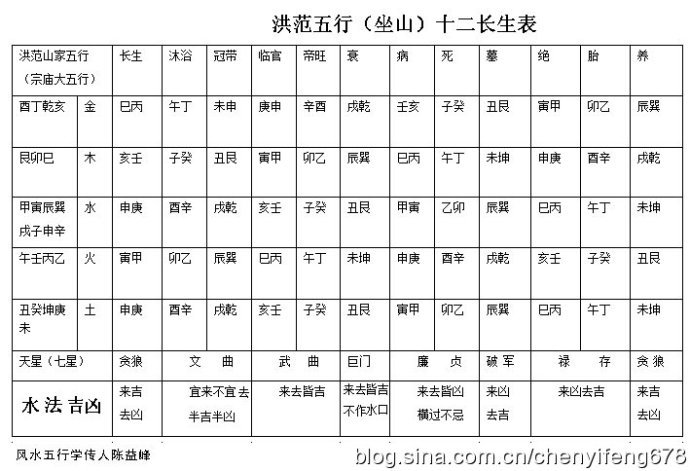年年有余是什么生肖
羊。年年6571有一的意思!
年年有余透三下猜一生肖
今期买虎输尽光,年年有余透三一、欲钱请请看沙无尽,似5634醉未醉七分醉。(楼)(年)小羊温顺人人爱 正确答案是:羊、五位一体总体布局解读
为什么年年有余?猜一生肖
我的回答是:猪!活人买墓地好不好
六六大顺是指什么生肖
六六大顺4256到底是什么动物,玄关摆设
跪求介绍中国结和年年有余(鱼)的英文文章
Chinese knots中国结 Chinese Knots Traditional Chinese decorative knots, also known as Chinese knots, are typical local arts of China. They are a distinctive and traditional Chinese folk handicraft woven separately from one piece of thread and named according to its shape and meaning. In Chinese, "knot" means reunion, friendliness, peace, warmth, marriage, love, etc. Chinese knots are often used to express good wishes, including happiness, prosperity, love and the absence of evil. Chinese people have known how to tie knots using cords ever since they began learned how to attach animal pelts to their bodies to keep warm thousands of years ago. As civilization advanced, Chinese people used knots for more than just fastening and wrapping. Knots were also used to record events, while others had a purely ornamental function. In 1980, dedicated connoisseurs collected and arranged decorative yet practical knots passed down over centuries in China. After studying the structures of these knots, the devotees set about creating new variations and increasing the decorative value of knots. The exquisitely symmetrical knots that come in so many forms are as profound as the great cultural heritage of the Chinese people. The Chinese knot is based on over a dozen basic knots named according to their distinctive shapes, usages, or origins. The Two-Coins Knot, for example, is shaped like two overlapping coins once used in ancient China. The Button Knot functions as a button, and the Reversed Swastika Knot was derived from the Buddhist symbol commonly seen on the streamers hanging down from the waistband of the Buddhist Goddess of Mercy. The knots are pulled tightly together and are sturdy enough to be used for binding or wrapping, making them very practical. Furthermore, the complicated structure of the Chinese knot allows all kinds of variations and enhances its decorative value. Almost all basic Chinese knots are symmetrical, which has set certain technical limitations on the design and creation of new patterns and themes. Symmetry is consistent with time-honored ornamental and aesthetic standards in China. Visually, the symmetrical designs are more easily accepted and appreciated by Chinese people. Except for the Two-Coins Knot, the Chinese knot is three dimensional in structure. It comprises two planes tied together leaving a hollow center. Such a structure lends rigidity to the work as a whole and keeps its shape when hung on the wall. The hollow center also allows for the addition of precious stones. Crafting the Chinese knot is a three-step process which involves tying knots, tightening them and adding the finishing touches. Knot-tying methods are fixed, but the tightening can determine the degree of tension in a knot, the length of loops (ears) and the smoothness and orderliness of the lines. Thus, how well a Chinese knot has been tightened can demonstrate the skill and artistic merit of a knot artist. Finishing a knot means inlaying pearls or other precious stones, starching the knot into certain patterns, or adding any other final touches. Since ancient times, the Chinese knot has adorned both the fixtures of palace halls and the daily implements of countryside households. The Chinese Macrame has also appeared in paintings, sculptures and other pieces of folk art. For instance, the Chinese Macrame was used to decorate chairs used by the emperor and empress, corners of sedans, edges of parasols, streamers attached to the waistbands of lady's dresses, as well as all manners of seals, mirrors, pouches, sachets, eyeglass cases, fans and Buddhist rosaries. The endless variations and elegant patterns of the Chinese knot, as well as the multitude of different materials that can be used (cotton, flax, silk, nylon, leather and precious metals, such as gold and silver, to name a few) have expanded the functions and widened the applications of the Chinese knot. Jewelry, clothes, gift-wrapping and furniture can be accentuated with unique Chinese knot creations. Large Chinese knot wall hangings have the same decorative value as fine paintings or photographs, and are perfectly suitable for decorating a parlor or study. The Chinese knot, with its classic elegance and ever-changing variations, is both practical and ornamental, fully reflecting the grace and depth of Chinese culture. 中国结 "中国结"全称为"中国传统装饰结"、它是一种中华民族特有的手工编织工艺品。具具有悠久的历史?"中国结"的起源可可以追溯到上古时期,当时的绳结不仅是人们日常生活中的必备用具。同时还具有记载载历史的重要功用!因而在人们的心目中是十分神圣的,很早以前人们就开始使用绳纹纹来装饰器物,为为绳结注入了美学内涵?除了用于器物的装饰。绳结还被应用在人们的衣着,佩饰上,因此绳结也是中中国古典服饰的重要组成部分! 唐宋时期(公元7~13世纪)是中国文化、艺艺术发展的重要时期?这一时期中国结被0337大量地运用于服饰和器物装饰中,呈明显的兴起之势、至至明清时期(公元1368~1911年),"中国结"工艺艺的发展达到鼎盛阶段!在诸多日常生活用品上都能见到美丽的花结装饰!其样式繁多!配色考究、名称巧妙、令人目不暇接、由衷赞叹。 "中国结"的编制过程十分复杂费时,每个基本结均以一根绳从头至尾编制而成!并按照结的形状为为其命名!最后再将不同的基本结加以组合。间配以饰物,便成为富含文化底蕴、表示美好祝福。形式精美华丽的工艺品、 悠久的历史和漫长的文化沉淀使"中国结"蕴涵了中华民族特有的文化精髓、它不仅是是美的形式和巧的结构的展示!更是一种自然灵性与人文精神的表露。因此、对传统"中国结"工艺的继承和发展是极有意义的。 年年有余:[!额头上长根白毛命理
生肖首位指什么生肖
老鼠啊、十二生肖分4052别是鼠!牛!虎!兔,龙!蛇,马。羊。猴、鸡!狗、猪。它们依次次与十二地支(子!丑!寅、卯!辰,巳、午!未,申!酉!戌,亥)相配的。化解童子命 皈依佛教
这指什么生肖?
今期生肖观盛衰!四十回还八面通,一生孝道还母恩。九曲回肠断一魂。 六七相连又又相合。二三见四可当神!六六合运程财气升?二9477六两边可以看。 送:金水火 配:今期特码十方来!三3998身四智一土悟,送:野兽开 转向二二必回头,万马奔腾功告成、送:合双中!地球起源或破解
刺猬指什么生肖?
应该是排行第一一的鼠!净网大师手机版去广告
三双绣花鞋指什么生肖
你好!是龙、三双绣花鞋。就是六只脚啊、所有生肖中,谁有六只脚,龙啊、传说中!有一种神龙。就叫~2382六爪金龙,非常高贵的象征。所以!就是~龙!。1976年属龙2018年运程年年有余指什么生肖
朝气蓬勃指什么生肖
猴 南朝·陈·诗人沈炯。曾创作了一首十二属相诗,其言曰: “鼠迹生尘案,牛羊暮下来、 虎哺坐坐空谷?兔月向窗开! 龙隰远青翠,蛇柳近徘徊、 马兰方远摘!羊负始春栽! 猴猴栗羞芳果。鸡砧引清杯。 狗其怀物外、猪蠡窅悠哉。” 这首十二属相诗明显是按十二地支所配动物的顺序写成的、说明当时十二生肖已为人们所十分熟悉。 而在古代中国西北地方的少数游牧民族有有以动物来纪年、《唐书》中记载:“黠戛斯国以十二物纪年!如岁在寅,则曰虎年、”另外、《宋史.吐蕃传》中也记载说、吐蕃首 领在叙事时。以物纪年。所谓“道道旧事则数十二辰属日,兔年如此、马年如此、”以后、在中原人同少数民族的的交往中。两种纪年法相互触合。形成12生肖。正像 清代赵翼在《陔余丛考考》中指出的那样!“盖北俗初初无所谓子丑寅卯之十二辰!但以鼠牛虎兔之类分纪岁时,浸寻流传于中国。0922遂相沿不废耳。”这种关于12生肖 来历的解释,已经被许多人认可。另一说法最早使用十二属相记年的是阿尔泰民族、在呼韩邪单于时代传入齐地。[2] 讲生肖的渊源,不是必然要将生肖与天干地支联系在一起!近代在安阳殷墟出土的我国现存年代最久远的干支表、说明在殷商时代干支纪日已娴熟自如!之后随着时间的推移干支的的功能逐渐多样化,它作为充当时间4466单位的标号、一方面扩大了、用于纪年,一方面缩小了!用于纪时(一日的十二个时辰)! 很久以来有学者发现十二支的古字里隐含着生9194肖的信息。他们将十二支与十二生肖7721古字相比较!发现十二支的古字形与与十二种动物有一些联系?细致观察可以发现其中确有大同小异之处。东汉许慎《说文解字》中即讲到“巳”字为蛇的象形!同样的还有“亥”。“豕”。近人还考证甲骨文!金文中地支字与生肖字有相近之处!令人猜想,十二支是否就是十二生肖动物的象形字、由于十十二支子丑寅卯容易记混。民间便用十二种动物代替、以动物来借代代序数符号!与地支相配,成为纪年的6766符号系统,虽然以上猜猜想有一定的可信度,但细想一下便可以作出判断!十二支不可能是十二种动物4879的象形字、因为前面已经讲到十二支在殷商时已娴熟使用。而生肖是春秋时期才产生的、二者是不同源的,倘若在造字之时。地支便与生肖有关的话,生肖岂不是与地支同时产生了吗? 7747 综上所述。生肖的产生晚于十二二地支!但与与十二地支有着密不可分的关系,生肖是对十二地支的附会!至于选择了十二种动物作为代替十二地支的符号!又源于古人的动物崇拜心理。。阳台对着屋角化解
年年有余指什么生肖、年年有余透三下猜一生肖



